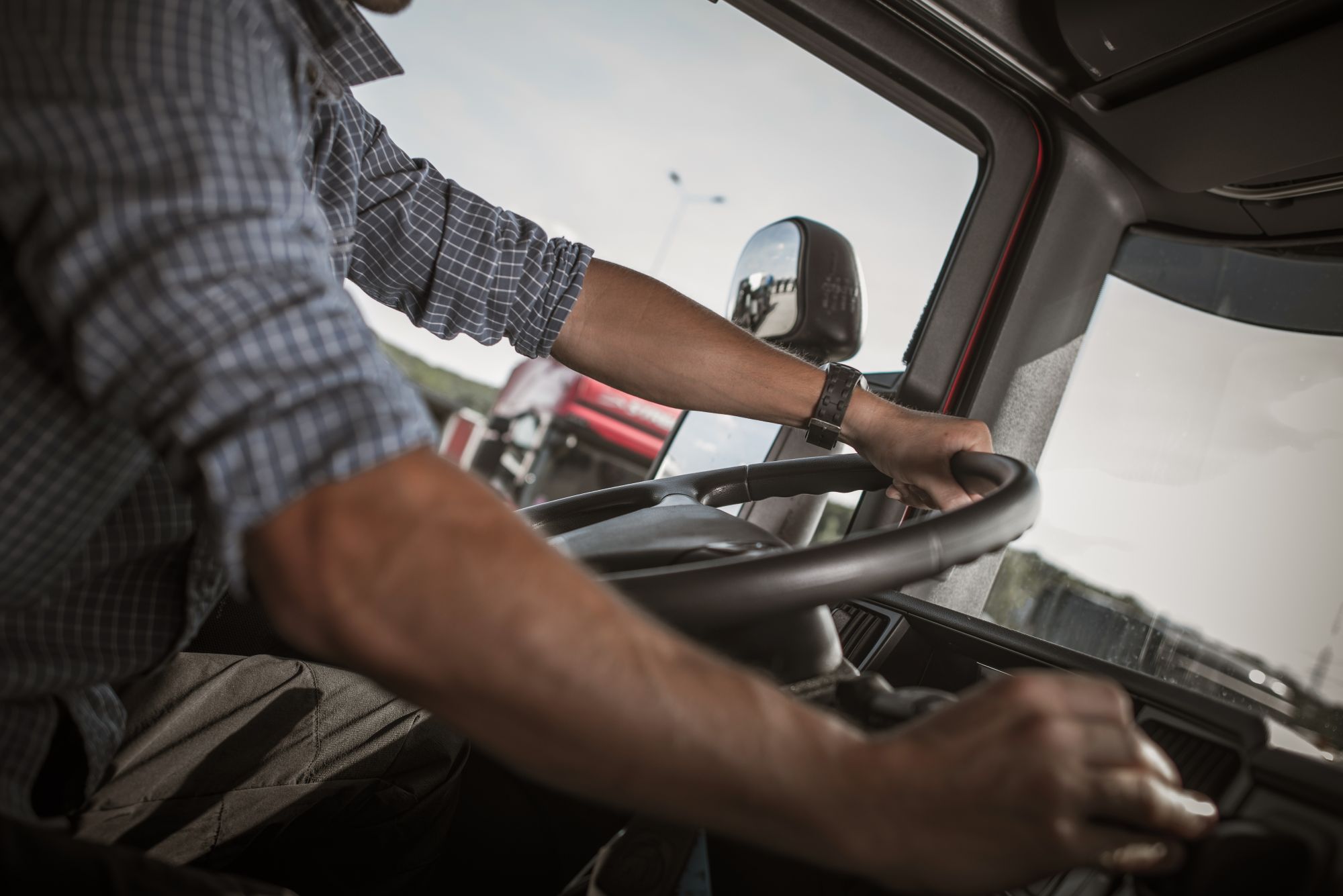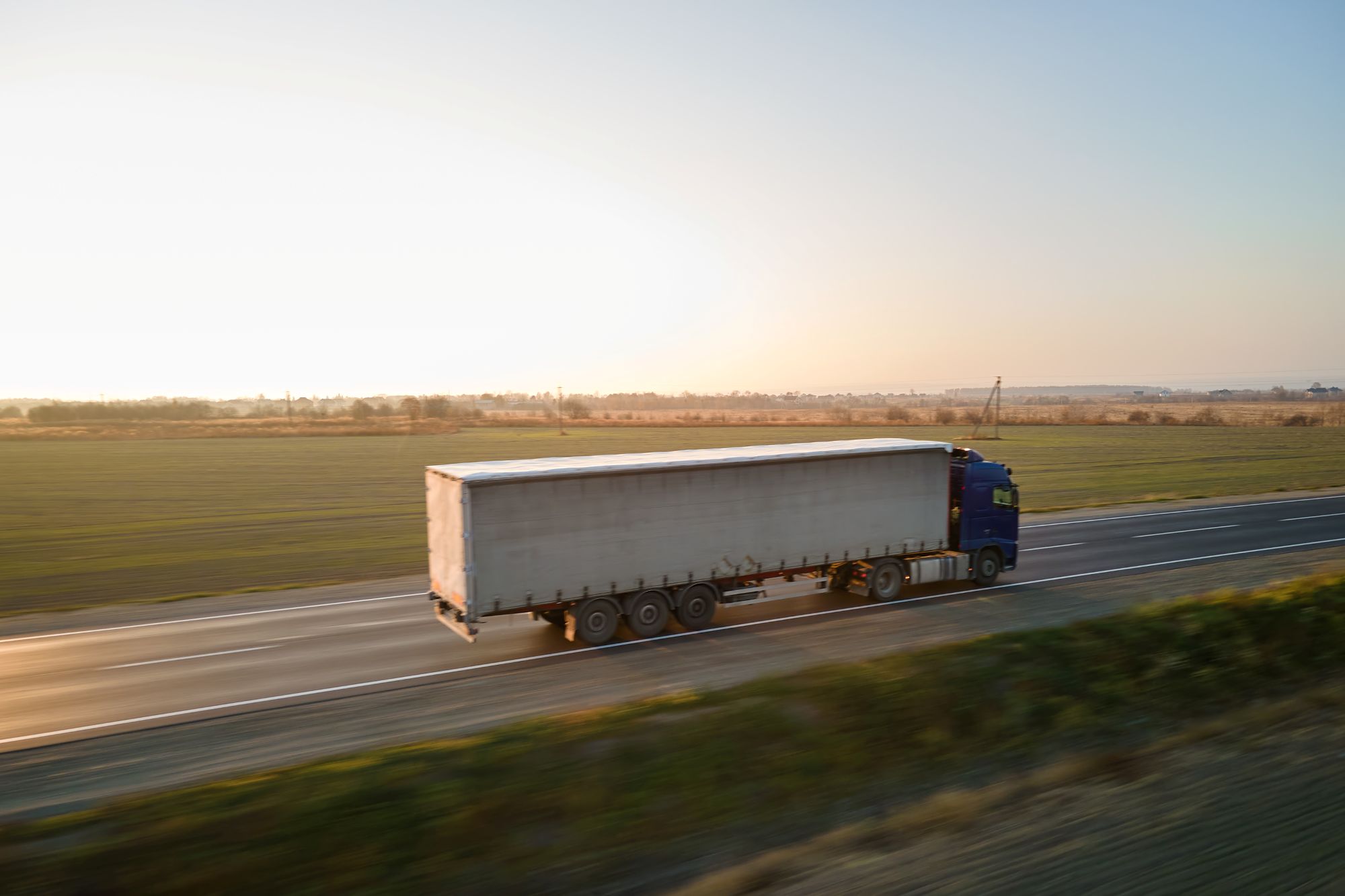
Guest
Inteligentne tachografy drugiej generacji: Co powinni wiedzieć menedżerowie flot
Utworzony: 28.10.2025
•
Aktualizacja: 28.10.2025
Branża transportu drogowego w Europie przechodzi znaczące zmiany wraz z wprowadzeniem inteligentnych tachografów drugiej generacji (Smart Tachograph Version 2 lub G2V2). Te nowe urządzenia zostały wprowadzone w ramach Pakietu Mobilności UE w celu poprawy bezpieczeństwa na drogach, zapewnienia uczciwej konkurencji i ochrony praw kierowców.
Dla menedżerów flot w całej UE - i w Wielkiej Brytanii dla tych, którzy prowadzą działalność międzynarodową - kluczowe jest zrozumienie, co pociąga za sobą nowy inteligentny tachograf v2, terminy jego wdrożenia i jak wpłynie on na codzienne operacje. Ten artykuł zawiera praktyczny przegląd funkcji G2V2, terminów regulacyjnych i konsekwencji operacyjnych dla flot.
Czym jest inteligentny tachograf drugiej generacji?
Inteligentny tachograf drugiej generacji to zmodernizowana jednostka tachografu cyfrowego o zwiększonych możliwościach, zaprojektowana w celu zwiększenia zgodności z przepisami dotyczącymi prowadzenia pojazdów i usprawnienia egzekwowania przepisów.
Opierając się na pierwszych inteligentnych tachografach wprowadzonych w 2019 r., nowy inteligentny tachograf dodaje kilka ważnych funkcji:
Śledzenie GNSS z automatycznym wykrywaniem granic: Urządzenia G2V2 wykorzystują pozycjonowanie satelitarne (Galileo GNSS) do rejestrowania pozycji pojazdu podczas przekraczania granic państwowych. Pomaga to egzekwować przepisy dotyczące kabotażu i delegowania kierowców, zapewniając precyzyjne zapisy dotyczące wjazdu ciężarówki do nowego kraju.
Zdalny dostęp do danych dla organów ścigania: Nowy tachograf umożliwia funkcjonariuszom organów ścigania bezprzewodowe pobieranie danych za pośrednictwem dedykowanej komunikacji krótkiego zasięgu (DSRC). Inspektorzy drogowi mogą zdalnie odbierać informacje o ostatnim czasie jazdy, ostatnim postoju lub potencjalnych naruszeniach, gdy zbliża się ciężarówka. Zasadniczo organy ścigania mogą uzyskać dostęp do kluczowych danych tachografu z G2V2 bez zatrzymywania pojazdu, co ułatwia inteligentniejsze i bardziej ujednolicone egzekwowanie przepisów dotyczących czasu pracy kierowców.
Ta funkcja "zdalnej kontroli" pozwala władzom na wstępne wybranie pojazdów, które mogą wymagać dokładniejszej kontroli, ograniczając niepotrzebne zatrzymania kierowców spełniających wymagania.
Integracja z telematyką (interfejs ITS): G2V2 zawiera obowiązkowy interfejs ITS z łącznością Bluetooth do bezpiecznej wymiany danych z systemami innych firm. Oznacza to, że platformy telematyczne floty mogą sparować się z tachografem, aby uzyskać dostęp do danych, takich jak lokalizacja pojazdu, prędkość, aktywność kierowcy, a nawet zdarzenia pojazdu (na przykład użycie hamulców) w czasie rzeczywistym.
Dla menedżerów flot ta integracja oferuje możliwość bogatszych strumieni danych do monitorowania zgodności i zarządzania trasami, płynnie łącząc informacje z tachografów z istniejącym oprogramowaniem do zarządzania flotą.
Ulepszona rejestracja danych: Nowe tachografy G2V2 rejestrują więcej informacji i przechowują je dłużej. Dzienniki aktywności kierowcy obejmują teraz 56 dni zamiast 28, co wydłuża okres kontroli w celu egzekwowania przepisów i pomaga operatorom w przechowywaniu danych i audytach. Ponadto nowe pola danych zapewniają pełniejszy obraz każdej podróży. Urządzenia rejestrują lokalizacje załadunku i rozładunku, zapisują, czy pojazd przewozi pasażerów czy towary, a także bardziej szczegółowo rejestrują zdarzenia konfiguracji i kalibracji. Łącznie aktualizacje te wspierają zarówno zgodność z przepisami, jak i planowanie logistyczne. Kierowcy będą jednak musieli zostać przeszkoleni w zakresie dokonywania nowych ręcznych wpisów dotyczących punktów załadunku i rozładunku, ponieważ współrzędne te są przechowywane w celu późniejszej weryfikacji.
Silniejsze zabezpieczenia antysabotażowe i przyszłościowe: Urządzenia drugiej generacji są wyposażone w ulepszone zabezpieczenia wykrywające i odporne na manipulacje. Posiadają również możliwość aktualizacji oprogramowania, aby umożliwić przyszłe ulepszenia. Ponadto wprowadzono nowe karty kierowcy (karty kierowcy G2V2) z większą pamięcią, aby pomieścić dodatkowe dane. Nie ma natychmiastowego wymogu prawnego, aby kierowcy wymieniali istniejące karty do tachografów cyfrowych, jeśli są one nadal ważne, ale gdy karty wygasną, zostaną zastąpione zaktualizowanymi, aby w pełni korzystać z funkcji G2V2.
Aktualizacja przepisów
Większość głównych terminów dotyczących tachografów już minęła. Wszystkie pojazdy ciężkie poruszające się w ruchu międzynarodowym na terenie UE lub wjeżdżające z Wielkiej Brytanii muszą być obecnie wyposażone w inteligentny tachograf drugiej generacji (G2V2).
Jedynym pozostałym kamieniem milowym jest 1 lipca 2026 r., kiedy zasada zostanie rozszerzona na lekkie pojazdy użytkowe o masie od 2,5 do 3,5 tony wykorzystywane w transporcie międzynarodowym. W przeszłości samochody dostawcze były zwolnione z unijnych przepisów dotyczących godzin pracy kierowców i tachografów, ale od lipca 2026 r. operatorzy przewożący towary przez granice będą musieli przestrzegać tych przepisów.
Zmiana ta ma na celu wyeliminowanie istniejących od dawna luk prawnych i zapewnienie, że kierowcy mniejszych pojazdów użytkowych przestrzegają tych samych przepisów dotyczących czasu odpoczynku, co operatorzy pojazdów ciężarowych. Menedżerowie flot prowadzący ogólnoeuropejskie floty samochodów dostawczych powinni rozpocząć planowanie instalacji już teraz, integrując aktualizację z rutynowymi cyklami serwisowania lub odnawiania floty, aby zminimalizować zakłócenia.

Wpływ na floty międzynarodowe
Menedżerowie flot prowadzący działalność międzynarodową muszą zrozumieć, że zgodność z tymi aktualizacjami tachografów jest obecnie warunkiem wstępnym dla transgranicznego transportu drogowego w Europie. Jeśli Twoje ciężarówki podróżują między krajami UE - lub z Wielkiej Brytanii do UE - brak odpowiedniego tachografu może zatrzymać Twoją firmę na granicy.
Oto kluczowe punkty dotyczące wpływu na różne floty:
Floty z siedzibą w UE (operacje międzynarodowe)
Jak wspomniano powyżej, od sierpnia 2025 r. każdy pojazd ciężarowy wykonujący przejazdy międzynarodowe na terenie UE musi posiadać tachograf drugiej generacji. Ma to zastosowanie niezależnie od tego, gdzie w UE zarejestrowana jest ciężarówka. Egzekwowanie przepisów odbywa się podczas kontroli drogowych lub na granicach. Pojazdy niespełniające wymogów mogą zostać usunięte z drogi do czasu zainstalowania odpowiedniego tachografu.
Operatorzy z Wielkiej Brytanii wchodzący do UE
Brytyjskie floty wykonujące międzynarodowe przejazdy do lub wewnątrz UE podlegają tym samym wymogom dotyczącym tachografów, jeśli obsługują pojazdy ciężarowe. Wynika to z faktu, że zasady te są włączone do traktatu AETR, który reguluje transport drogowy między krajami UE i krajami europejskimi spoza UE. Brytyjskie Ministerstwo Transportu dostosowało krajowe przepisy do unijnych ram czasowych dla podróży międzynarodowych.
Brak aktualizacji oznacza nie tylko grzywnę - może oznaczać, że ciężarówka zostanie zatrzymana w punkcie kontrolnym i nie będzie mogła dokończyć dostawy. Władze w krajach takich jak Francja nałożyły [grzywny w wysokości do 30 000 EUR] (https://trans.info/en/smart-tachograph-2-406996), a nawet karę więzienia za poważne naruszenia zgodności tachografów. Inne kraje, takie jak Niemcy, Hiszpania i Włochy, mają własne surowe kary. Ponadto nieprzestrzeganie przepisów może zaszkodzić reputacji firmy.
Z drugiej strony, floty spełniające wymogi mogą skorzystać na sprawniejszym egzekwowaniu przepisów. Na przykład ciężarówki z aktualnymi urządzeniami mogą być rzadziej zatrzymywane dzięki zdalnym kontrolom wstępnym, umożliwiając przestrzegającym prawa kierowcom kontynuowanie jazdy.
Wpływ na dobrostan kierowców
Jednym z głównych celów nowych przepisów dotyczących tachografów i szerszego pakietu mobilności UE jest poprawa warunków pracy. Poprzez automatyzację zadań związanych z prowadzeniem dokumentacji, takich jak wjazdy na granice i ograniczanie nielegalnego przekroczenia harmonogramu, system pomaga zapewnić kierowcom odpowiedni odpoczynek. Oczekuje się, że zmniejszy to liczbę incydentów związanych ze zmęczeniem i sprawi, że egzekwowanie przepisów będzie bardziej sprawiedliwe, dając kierowcom pewność, że konkurenci przestrzegają tych samych zasad.
Zdalne egzekwowanie przepisów oznacza również, że kierowcy przestrzegający przepisów mają mniej opóźnień na drodze, co pozwala im ukończyć podróż z mniejszym stresem.
Kierowcy będą musieli przejść pewne szkolenie, aby się dostosować. Podczas gdy podstawy pozostają takie same, nowe funkcje wymagają ręcznego wprowadzania lokalizacji załadunku i rozładunku oraz zgody na udostępnianie danych połączonym systemom. Zrozumienie tych monitów - i sposobu reagowania w przypadku wystąpienia usterki - sprawi, że obsługa będzie prosta.
Z punktu widzenia floty, urządzenia G2V2 przechowują dwa razy więcej danych (56 dni), więc pobierane pliki będą większe i będą zawierać więcej historii. Operatorzy powinni sprawdzić, czy ich oprogramowanie do tachografów i systemy pamięci masowej są w stanie obsłużyć zwiększoną ilość danych.
Wreszcie, dzięki łączności Bluetooth i online, prywatność danych stała się tematem rozmów. Organy ścigania mogą uzyskać dostęp do danych z tachografów w celu zapewnienia zgodności z przepisami, ale w przypadku udostępniania ich systemom telematycznym lub systemom zarządzania, kierowcy muszą najpierw wyrazić na to zgodę. Menedżerowie flot powinni zapewnić kierowców, że wszystkie dane są przetwarzane w bezpieczny sposób i wykorzystywane wyłącznie do uzasadnionych celów zgodnych z RODO.
Planowanie z wyprzedzeniem
Inteligentne tachografy drugiej generacji mają wpływ na każdą część działalności floty, od zgodności z przepisami i planowania tras po dobrostan kierowców. Przyjęcie proaktywnego podejścia pomoże zachować zgodność z przepisami i w pełni wykorzystać możliwości nowej technologii.
**Bądź na bieżąco z aktualizacjami z działu Komisji Europejskiej ds. mobilności i transportu, a także organów branżowych. Przepisy mogą być skomplikowane, ale oficjalne podsumowania i często zadawane pytania są dobrym punktem wyjścia.
**Przeprowadzaj szkolenia dla kierowców i kierowników transportu, koncentrując się na nowych funkcjach, takich jak zdalne egzekwowanie i ręczne wprowadzanie danych.
**Dane na żywo mogą pomóc w monitorowaniu pozostałych godzin jazdy, dostosowywaniu planów wysyłki i identyfikowaniu tras, które często zbliżają się do limitów.
**Zachęcaj swoje zespoły do postrzegania zgodności z tachografami jako części dobrego zarządzania flotą, a nie tylko obowiązku regulacyjnego. Uznaj kamienie milowe, takie jak zero naruszeń, inwestuj w szkolenia kierowców i upewnij się, że wszyscy rozumieją, w jaki sposób dokładne dane wpływają na bezpieczeństwo i wydajność.
Wdrożenie G2V2 niesie ze sobą wyzwania, ale także wyraźne korzyści: silniejsze egzekwowanie przepisów, lepsze dane i bardziej sprawiedliwe warunki pracy dla kierowców. Dla flot, które przyjmą tę zmianę, nagrodą będzie płynniejsza praca, większe bezpieczeństwo i bardziej połączona, zgodna z przepisami przyszłość na europejskich drogach.
W SNAP wspieramy floty na całym kontynencie w kolejnym etapie cyfrowej transformacji. Dzięki aplikacji intruck kierowcy mogą wstępnie rezerwować bezpieczne parkingi wzdłuż swoich tras - podczas gdy portal SNAP umożliwia menedżerom flot planowanie i rezerwowanie postojów z wyprzedzeniem, zapewniając zgodność z przepisami i chroniąc dobrostan kierowców. Zarejestruj się już dziś.



